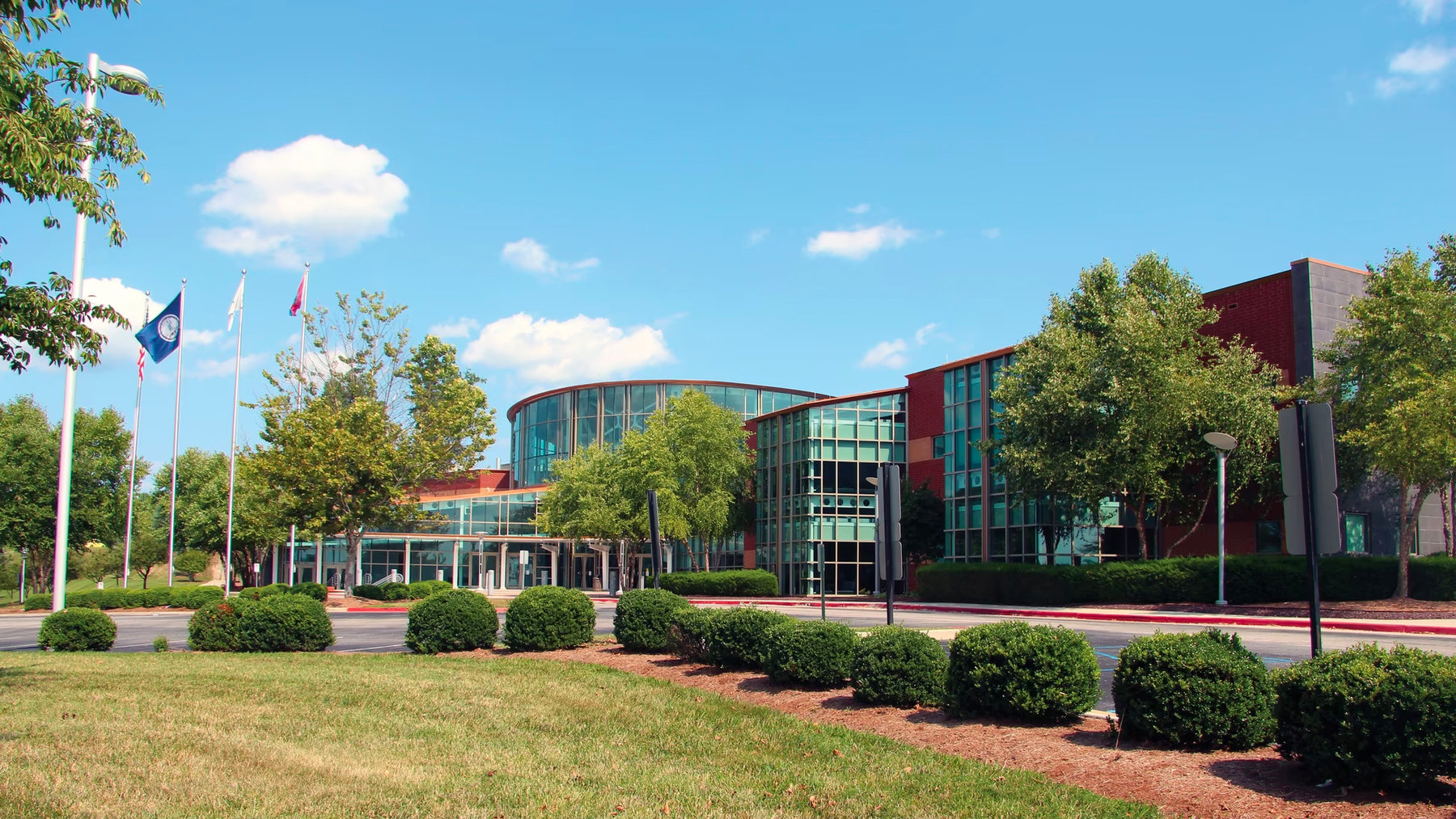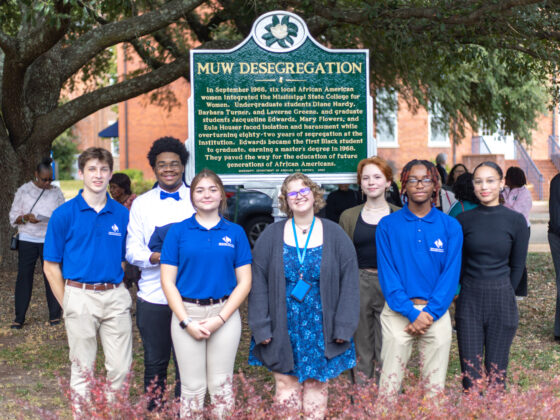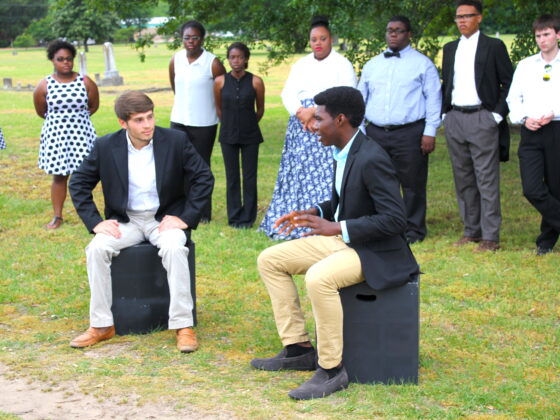Here is another look at the far-southern-Virginia town of Danville: once a thriving tobacco-and-textile center, now trying to figure out what to do after all the mills have shut down.
In keeping with the previously announced intention to keep drawing connections, parallel themes, and lessons from the communities we visit, here are three aspects of Danville’s story worth noticing elsewhere, as boiled down as I can make them. A summary:
- First, Danville’s civic renewal shows the importance of a relatively new form of philanthropy.
- Second, it shows the importance of creative use of a onetime historical event—in this case, the “tobacco settlement,” which directed billions of dollars from the tobacco industry to local institutions. (This naturally leads to questions about whether a comparable “opioid settlement” might have similar transformative effects.)
- Third, it shows the importance of public investment in infrastructure, specifically in broadband capacity.
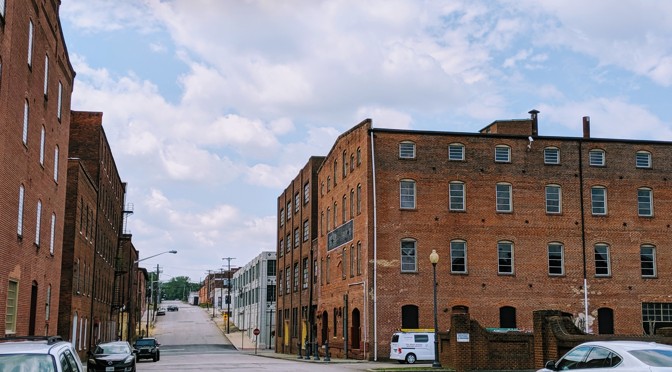
Previously, I did several reports on Danville’s attempt to put its extensive (and beautiful) inventory of old mill buildings to modern use: “The Reinvention of Danville’s Downtown, Part 1,” “Danville’s Story, Part 2,” and “How Danville Avoided Omaha’s Mistake.” Deb Fallows has written about the involvement of Danville’s faith community (and others) in dealing with rural health issues (“A Regional Approach to Rural Health Challenges“), and about the exceptional new Y that has opened alongside the Dan River downtown ( “A Community Within a Community“).
On to the details.
1) The role of foundations—and foundations of a particular sort: Institutions called “community foundations” are well known, active, long-established, and important across the country. Each year, they give a total of more than $5 billionto civic and charitable efforts in their areas.
The evolution of Danville and its surroundings has been very heavily influenced over the past 15 years by a similar-sounding but structurally different sort of charitable organization, the “health conversion foundation.”
In Danville, the relevant organization is called the Danville Regional Foundation, or DRF. The DRF’s effects in this part of Virginia and North Carolina are too broad and deep to cover in any detail here. For more of the specifics, I direct you to the DRF’s informative site, or articles like this in The State of the South or this in Perspectives on History. Almost everything under way in the vicinity—from the revival of Danville’s downtown to the launching of regional initiatives connecting smaller towns that have lost tobacco, textile, or furniture industries—bears the mark of the DRF. Its area of responsibility includes the city of Danville itself, neighboring Pittsylvania County in Virginia, and the larger Dan River area extending into Caswell County in rural North Carolina.
Why is this worth mentioning? Because of the foundation’s origin story. It’s one of a group of health conversion foundations across the country that have played a surprisingly large civic role over the past generation. Or at least surprising to me, since I hadn’t know about this specific form of modern philanthropy until our first trip to Danville last fall.
You can read extensive details about health conversion foundations from Health Affairs, but in brief: These are charities set up when a nonprofit hospital or similar facility is sold to a private company. Hundreds of them operate around the country, with total assets in the tens of billions. Some examples are the Rapides Foundation, of Louisiana, founded with $140 million in hospital-sale proceeds in 1994; the Cameron Foundation, of Petersburg, Virginia, founded in 2003 with hospital-sale proceeds valued at about $90 million in 2008; and the Harvest Foundation, of Martinsville, Virginia, which was also founded with the proceeds from the sale of a hospital, in 2002, with assets valued at about $200 million in 2008. Many more examples are listed in the Rural Health Initiative newsletter, here.
In Danville’s case, the foundation was formed after the sale of the local Danville Regional Hospital Center to a private company, LifePoint Hospitals, in 2005 for about $200 million. The DRF has given out some $116 million in grants since then; and through the magic of investments and the market, its endowment is now larger than when it began.

Could the sale of a nonprofit health center to a for-profit firm conceivably be a net benefit for a community? As opposed to one more step toward an over-marketized, winner-take-all society?
I started out skeptical, and I still assume that the outcomes must vary case by case, depending on how the new foundation’s money is put to use, and how the new for-profit system runs. But an initial look at think-tank and academic papers suggests that many of the foundations have tried to address public-health and community-improvement goals in their areas.
For instance, here are some reports and articles I’ve seen: “With the ACA Under Fire, Can Health Conversion Foundations Patch the Safety Net for Low-Income Americans?,” in Health Affairs in 2017; “How Are Health Conversion Foundations Using Their Resources to Create Change?,” also in Health Affairs, in 2018; “Health Conversion Foundations: How to Make Them Relevant,” in Nonprofit Quarterly in 2016; and “A New Generation of Health Foundations,” in Healthcare Finance in 2014. On balance, they offer a positive assessment.
“I won’t say that every one of these foundations has fulfilled its potential,” Karl Stauber, who is stepping down this summer after a dozen years as the head of the Danville Regional Foundation, told me. “But my estimation is that two in 10 have had an oversized impact on the revitalization of the areas that they serve.”
Maybe everyone else reporting on rural and smaller-town development already knew about health conversion foundations. I hadn’t understood the importance of this recent part of the philanthropic landscape until we were introduced to it in Danville. (Now, of course, I see signs of it everywhere.)
2) The role of the tobacco settlement: One of our favorite places is Danville is a complex known as the Institute for Advanced Learning and Research. It’s a set of modern buildings on a hill near the Danville airport, east of downtown. The title of the institute may seem overly ambitious, but the existence of this research center represents a serious effort to correct a regional weakness, and to apply unusual resources to that end.
The weakness is Danville’s distance from established, big research universities. Virginia Tech, in Blacksburg, is two-plus hours away by car, and so is the University of Virginia, in Charlottesville. Those in North Carolina are far enough away not to have Danville within their force field for attracting students and faculty, or fostering spin-off research companies. We heard time and again that the lack of higher-ed centers reflected the wishes of mill leadership during Danville’s long run as a textile-and-tobacco town. In those days, it was more convenient for the mills if the locals lacked choices in schooling and occupation.
The institute (as I’ll call it from here on) represents a conscious attempt to bring to the region much of what a university would provide—apart, of course, from the thousands of on-scene students. It has evolved to offer many of the spin-off functions you’d associate with a serious state university: research projects, start-up spaces, training partnerships with companies, alliances with local schools and NGOs, development centers for advanced manufacturing, and a general sense of involvement with the economic future of the community. You can read in detail about its five main divisions here. It is an impressive operation.

When I talked with the institute’s director, Mark Gignac, at the headquarters, he described projects similar to those we’d seen be successful elsewhere—and also one that was unique, the Industrial Hemp Summit. Industrial hemp uses have almost nothing to do with the liberalized marijuana laws in many states and a lot to do with potential commercial and scientific uses of hemp and its components. This is a subject that companies, universities, and governments around the world are taking very seriously because of its industrial- and health-care-related possibilities. And it is one in which some of the same areas of the country that have been economically battered by tobacco’s collapse enjoy natural advantages.
“Two hundred years ago, Virginia was the leading exporter of hemp in the world,” Gignac told me. The same sort of soil that favors tobacco is also good for hemp, which was traditionally used for rope and similar applications, especially in the sailing industry. “People get it confused with marijuana, but we’re talking about something different,” he said—the different versions involving fiber, CBD oil, and other hemp products. “It is important for people to understand that hemp is not just another agricultural product. Hemp is about improving human health.”
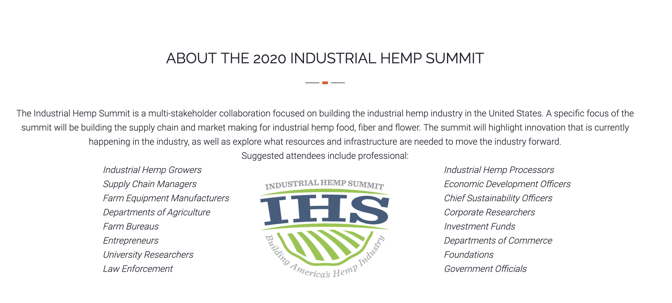
“It’s an agricultural crop that is super profitable, I mean super,” he said. “In the good old days, people used to say you could make $4,000 per acre growing tobacco. You can’t do that any more. But in hemp—we’re just getting started, but today you can make between $10,000 and $20,000 per acre, depending on the grade. So you don’t need a lot of acres. And the region here is perfect for this kind of crop.” For more details, you can join the queue to attend the next summit.
Now the larger point about why the institute exists in the first place. This organization that is helping figure out Virginia’s post-tobacco future was set up partly through proceeds from the tobacco industry, through the historic “tobacco settlement.”
Starting with Mississippi’s lawsuit in the mid-1990s, one state government after another began suing Big Tobacco companies because of smoking’s toll on public health. In 1998, as part of a sweeping “master settlement,” the major tobacco companies agreed to pay out a total of more than $200 billion (yes, billion) to more than 40 state governments over the following 25 years.
In most states that never had cigarette or tobacco industries, the money has mainly gone toward public-health efforts or anti-smoking campaigns. But in states like Kentucky, North Carolina, and Virginia, some of the money went toward compensating communities where tobacco growing or cigarette making had been pillars of the economy.
Danville originally grew on the tobacco business. Thus, it received extra payments—some of which went toward creating the Institute for Advanced Learning and Research.
In short: The Danville region’s transition to a new economy got a significant boost from shrewd reuse of after-effects of the old economy.
It makes you wonder what a “master opioid settlement” might do for the parts of the country that have suffered most grievously from this scourge.
3) Investment in broadband: To a degree that is hard to imagine from New York or San Francisco, smaller-town and inland-America communities suffer from too-slow, too-costly internet connections. Here’s a snooty coastal way to make the point: Running a web-based business in many parts of the U.S. is like trying to do the same thing via an airline’s in-flight Wi-Fi.
Danville is an exception. A dozen years ago, it began building a municipally owned high-speed fiber-optic network, which now offers lower-cost, higher-speed connections to existing and start-up businesses than in most communities of its location and size. That network is called nDanville, and you can read about its history and effects here.
A feature in Broadband Communities, called “Danville Transforms Its Economy With Fiber,” gives the overview, including the importance of Danville’s long history with city-owned (rather than privately run) utilities. That article, by Andrew Michael Cohill, said:
Danville’s ownership of its electric utility (it has been in the electric service business since 1876) gave it a significant advantage in deploying fiber. It is the largest of 15 municipalities in Virginia that own electric power distribution services … As in other fiber communities that own electric utilities, city ownership of utility poles eliminates negotiation of pole attachment fees and minimizes the impact of make-ready costs …
As with conventional transportation roadways, the city builds and maintains Danville’s digital roads, but private businesses use the system to deliver broadband services …
The nDanville high-performance fiber network has brought other jobs and businesses to Danville and has helped drive down the cost of Internet access, telephone service and TV service in the city.
“What’s unique is that we don’t sell services direct to the customer,” Jason Gray, the director of Danville Utilities, told me. “We provide the infrastructure, and private companies can compete.” The result, he said (and outsiders confirmed), was that households, start-ups, and established businesses in the community had faster, cheaper internet connections than in most other rural towns.
“It’s an attraction [for] economic development,” Gray told the Community Broadband podcast in 2015. “It’s one less thing we can check off our list—that we do have broadband, and we have scalable broadband that we can offer many different tiers of services, and whatever, basically, the company needs.” This is obviously not in itself the full answer to rural development, but it’s one more step.
- Health conversion foundations offer one more tool for community development.
- The “master settlement” for tobacco was the basis for one community’s equivalent of many of the advantages of a local university.
- Investment in high-speed internet gives smaller, distant towns a better chance to compete for modern, high-value jobs.
Those are some lessons from Danville.

